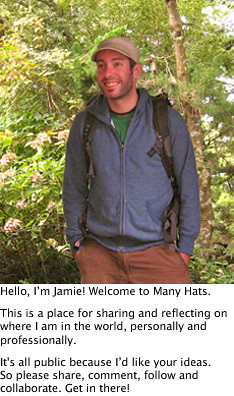3 Inspirations for Designing Time
Coming off the back of my research on the world of timetabling, I find this lingering question of what should be part of each and every day. I suppose when I ask this, I’m mostly asking about a school day, because those are the bulk of my days. More to the point, as a teacher in an elementary classroom, I design the framework of the day for my students. So this question is partially about what I would like to have as part of my days, and certainly also about what I think should be part of theirs.
I just went on a mini TED talk binge and watched three in a row.
our aspirations as teachers, as adults, should be to raise children who are way better than we are.
First, Adora Svitak on What Adults Can Learn From Kids. My takeaways were many, but among them was the idea that our aspirations as teachers, as adults, should be to raise children who are way better than we are. No doubt. As she puts it, this is why we’re no longer in the dark ages. It’s an interesting point to make, when you consider resistance against developments in curriculum… The old “If it was good enough for me, it’s good enough for my kid” mentality. We don’t want coming generations to be as good as us. We need them to be better.
I followed up Adora’s amazing talk by watching Paul Nicklen telling tales of his explorations in the polar regions, and the real meaning of the recurring news-bite about the disappearance of polar ice. Listening to him describe his evolving relationship with a frightening, thousand-pound leopard seal, who spent four days trying to feed, nurture and protect him, and the plight of these ecosystems, was the perfect case study for Adora’s point about generational evolution being so critical.
This is a case study of generational evolution.
Finally, Elif suggested I watch Neil Gershenfeld on the rise of FabLabs, and the evolution of the digital revolution. The thing which stuck with me in the end was how this phenomenon of tinkering, which I’ve written about before, was creating a next generation of ground-up innovation, much of the examples being the innovation of children. Kids working at scaled-down, budget variations of multi-million dollar MIT facilities who find ways of doing things that are then emulated back at MIT itself. This is a case study of generational evolution. And what’s more, the global potential reach of these laboratories defies the thought that some western, wealthy educational background is a prerequisite to notable innovation and success in high tech fields.
So, I’m back to the question… What should be part of a day in school?
I look at the many takeaways from these three videos and begin to get a feeling of what some ingredients might be. More on this in my next post…
Related
5 Responses to 3 Inspirations for Designing Time
Leave a Reply Cancel reply
This site uses Akismet to reduce spam. Learn how your comment data is processed.
MY CLASS BLOG
This is my classy, yet personal blog. For my less personal –but perhaps classier– classroom blogs, click here, or here.MANY HATS in your inbox
Subscribe to Many Hats...

many hats by Jamie Raskin is licensed under a Creative Commons Attribution-NonCommercial-ShareAlike 3.0 Unported License.Details… details…
CATEGORIES
@jamieraskin
My TweetsINVASION PROGRESS








































HISTORY
MANY COMMENTS









What a great quote and a great way to address that super annoying question:
“We don’t want coming generations to be as good as us. We need them to be better.”
My thoughts exactly. How’s Munich btw? October should be nice…
This offers excellent points for discussion and debate, as does your earlier post on timetabling. What we do with the school day – and how the time is divided – must be an open discussion in a healthy school environment. How often are students’ views and ideas not only consulted, but actually put into practice? Perhaps one difficulty is the restrictions schools face in terms of experimentation, especially in regards to time and curriculum. Without trying out a new (and possibly untested) model or approach, it’s hard to know its effectiveness. It starts to sound like a bizarre tongue twister or riddle: how do we find time in the timetable to develop a better timetable…?
I thoroughly enjoyed the TED videos, especially Adora Svitak’s fearlessly articulate speech. Perhaps this should be played at the start of any timetable meeting, at which I hope there would be at least some student representatives.
I’m with you. It’s a riddle and a juggling act and a tongue twister and whatever else. Still, it’s right up there with the facilities you use, the staff you hire, the curriculum you adopt and probably very few other aspects of education as being the most powerful decisions we make as educators.
A big thing for me when thinking about the “school day” is the format, rather than what’s included. I know that sounds kind of crazy, but hear me out. The idea that the day has to be broken down into different chunks, and how big those chunks are, drives me nuts. When most adults have a project or a task to do, they can work until their finished (or until they need a change of pace). In our school day (well, at least in middle and high school), we work until the bell rings – whether or not we’re done or ready to change tasks. So, to me, I would like to see the school day take a more organic schedule, where challenges and ideas and projects can be explored at a pace that is more conducive to deeper learning (rather than 45 min periods).